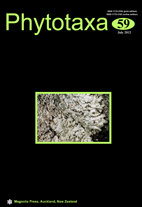Abstract
A total of 452 species, comprising 262 lichens, 78 mosses and 112 liverworts, is recorded from Eucalyptus obliqua L'Hér. dominated wet forest in southern Tasmania. A classification of the species is presented, based on their distribution and ecology. Four groups are recognised: (i) mature wet forest species, subdivided further into species of old forests, species of old trees, and foliicolous species; (ii) species of open eucalypt forests; (iii) widespread and common species; and (iv) species of disturbed habitats, subdivided into transient colonisers and persistent early colonisers. Together with an assessment of conservation status of the species, this classification provides a tool whereby simple comparisons of floristic richness or species composition can be refined so that the ecological ‘quality’ of a site can be evaluated. A case study comparing the flora before and after burning demonstrates the usefulness of the approach. It showed that although the diversity of cryptogams recovers quite quickly, the species composition of the flora alters significantly. The classification represents the first of its kind for lichens and bryophytes in Tasmania’s forests and will be extended in the future to incorporate other forest types and non-forest vegetation. Several lichens, including Absconditella celata Döbbeler & Poelt, Arthonia didyma Körb., Calicium hyperelloides Nyl., Cladonia adspersa Mont. & Bosch., Coenogonium lutescens (Vĕzda & Malcolm) Malcolm, Coppinsia minutissima Lumbsch & Heibel, Dactylospora heimleri (Zukal) Döbbeler & Triebel, Micarea melaneida (Nyl.) Coppins, Opegrapha herbarum Mont. and Placynthiella uliginosa (Schrad.) Coppins & James, are recorded in Tasmania for the first time.

